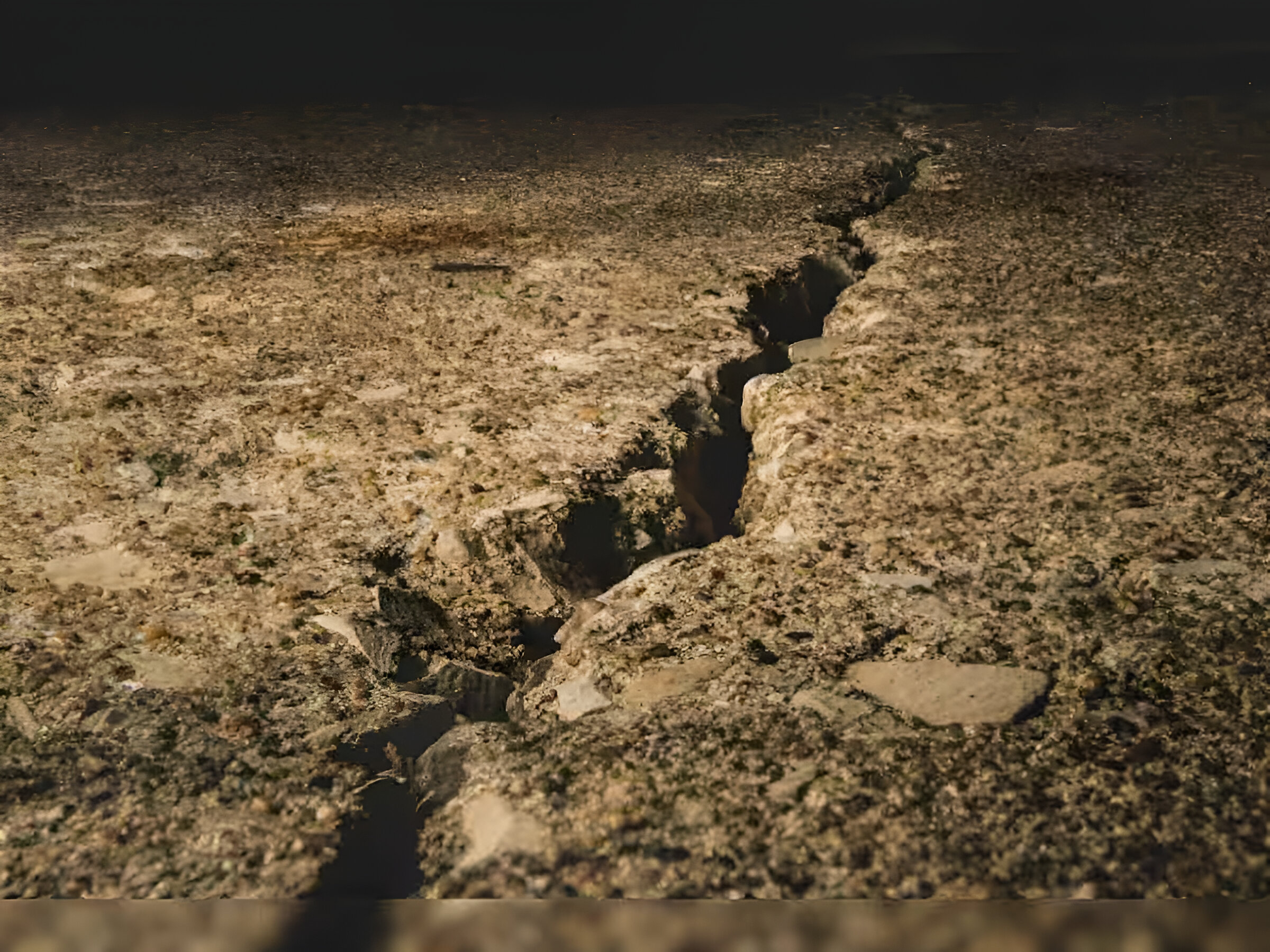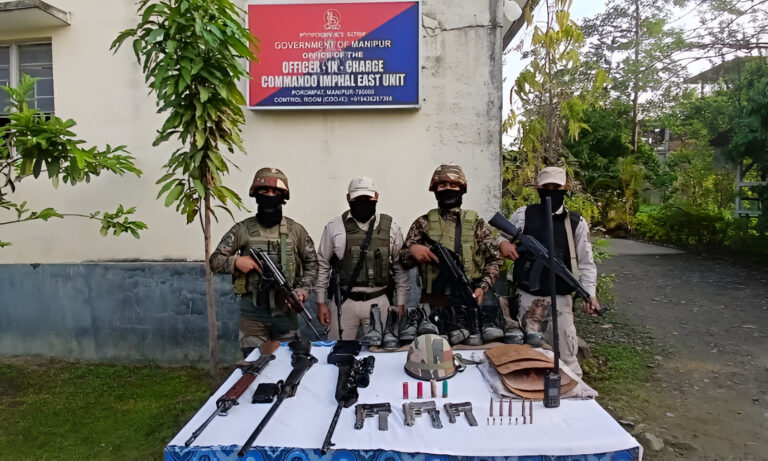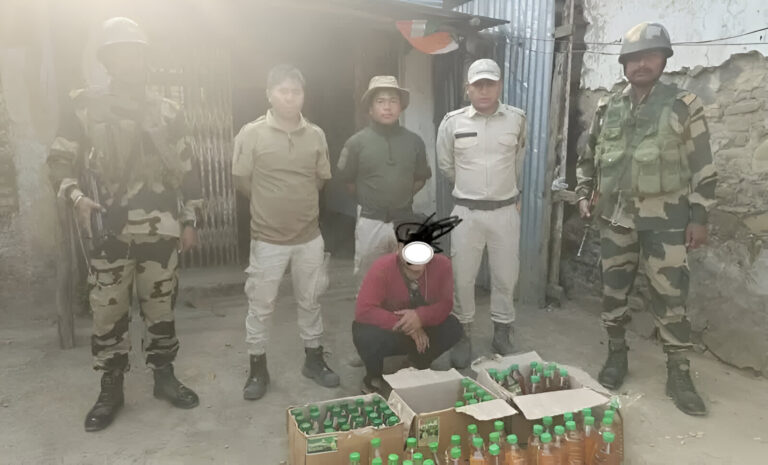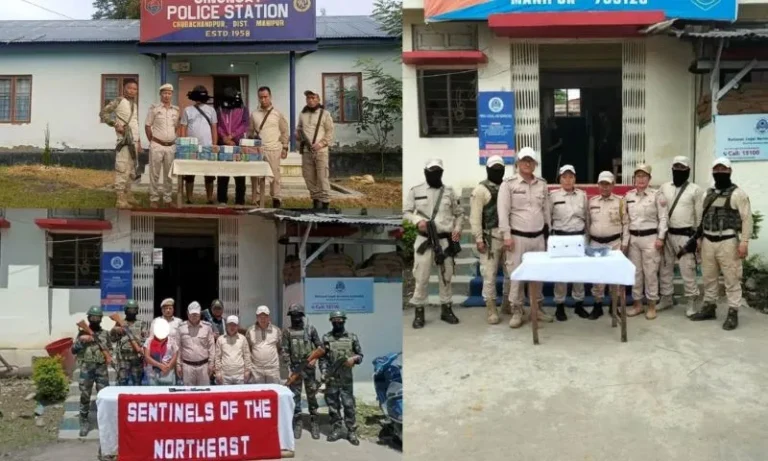5.7 Magnitude Earthquake Jolts Manipur: Tremors Felt Across Guwahati and Meghalaya
Short Summary
A powerful 5.7 magnitude earthquake rattled Manipur recently, sending tremors far beyond its epicenter. Residents in Manipur, along with communities in Guwahati and Meghalaya, experienced noticeable shaking that has prompted widespread concern. Local authorities and seismic experts are now on high alert, assessing damages, monitoring potential aftershocks, and coordinating rapid response measures to ensure public safety. This article explores every facet of the incident—from the science behind the tremors to the human stories emerging from the affected regions.
Full Analysis and In-Depth Coverage
Introduction: A Day That Shook the Region
Imagine going about your day when suddenly the ground beneath you starts to rumble. For many in Manipur, that unsettling feeling became all too real as a 5.7 magnitude earthquake hit the region. Not only did Manipur face the immediate impact, but the tremors also rippled into neighboring areas like Guwahati and Meghalaya. In today’s article, we’ll break down what happened, why it matters, and what you need to know to stay safe and informed.
Earthquakes are unpredictable, yet they leave an indelible mark on communities. This event is a reminder of nature’s unpredictable force and the importance of being prepared. Whether you’re a resident in one of the affected areas or simply interested in seismic activity, this guide offers a comprehensive look at the event, its causes, and the proactive steps being taken to manage its aftermath.
Understanding the Science Behind Earthquakes
What Causes an Earthquake?
At its core, an earthquake is the result of sudden energy release within the Earth’s crust, typically due to shifting tectonic plates. When these plates grind against each other or suddenly slip, energy is released in waves that cause the ground to shake. This seismic activity can vary in intensity, and a 5.7 magnitude event is considered moderately strong—capable of causing significant shaking and minor damage, especially in regions not well-equipped for such events.
The Role of Tectonic Plates in North-East India
North-East India, including Manipur, Guwahati, and Meghalaya, sits atop a complex network of tectonic boundaries. This area is particularly seismically active due to the ongoing collision between the Indian Plate and the Eurasian Plate. Such interactions are responsible for not only frequent tremors but also for historical events that have reshaped landscapes and impacted lives. The recent quake in Manipur is a stark reminder of these dynamic geological processes.
Aftershocks: Why They Happen and What to Expect
Following a major seismic event, it’s common for smaller aftershocks to occur. These are secondary tremors that happen as the Earth’s crust adjusts to the new stresses imposed by the main quake. Experts emphasize that aftershocks can sometimes be almost as powerful as the primary event, so it is crucial for residents to remain cautious and follow safety guidelines in the days following the earthquake.
Detailed Account of the Earthquake Event
The Moment of Impact
On March 5, 2025, residents of Manipur were jolted awake—or caught off guard—by a sudden and intense shaking that lasted for several seconds. The quake, registering a magnitude of 5.7 on the Richter scale, was felt over a broad area. In Guwahati and Meghalaya, people reported feeling a series of rapid, pulsating tremors that rattled windows, disturbed furniture, and left many questioning the stability of their surroundings.
Imagine being in a quiet neighborhood, sipping your morning tea, when suddenly the ground begins to quiver. That moment of disbelief and fear quickly spreads among the community, as people rush to secure themselves and check on loved ones. This shared experience, though terrifying, also sparks a sense of unity as neighbors come together to support one another.
Immediate Reactions and Community Response
In the chaos that ensued, local residents immediately took action. Families evacuated their homes, while schools and offices were swiftly closed to prevent accidents. Social media platforms buzzed with real-time updates, photos, and videos, capturing the raw emotion and urgency of the situation. Many expressed gratitude for the local authorities’ rapid response and for the robust emergency protocols that were quickly put into action.
The response wasn’t just reactive—many community leaders and volunteers organized impromptu meetings to assess damage, share safety tips, and offer support. This spontaneous community mobilization highlights the resilience of the people in this region, who have learned through past experiences that preparedness and solidarity are key in times of crisis.
Assessing the Damage: What Has Changed?
Infrastructure and Buildings
One of the immediate concerns after an earthquake is the integrity of buildings and infrastructure. In Manipur, older structures have shown signs of stress, with some reports indicating minor cracks and fissures on walls. In more densely populated areas like Guwahati and parts of Meghalaya, the shaking resulted in rattled windows and, in a few cases, collapsed ceilings. Engineers and city officials have been working tirelessly to assess these damages and ensure that no long-term hazards compromise public safety.
It’s important to note that modern buildings, which are constructed with earthquake-resistant designs, fared much better. This contrast between old and new structures underscores the critical need for updated building codes and retrofitting older constructions to withstand seismic events.
Utilities and Public Services
Disruptions to utilities such as electricity, water, and communication networks were reported in the immediate aftermath. Power outages affected some neighborhoods, while water supplies in certain areas were temporarily interrupted. However, thanks to rapid response measures by local authorities, most of these services were restored within a short period.
Public transport also faced delays, with some roadways showing signs of stress. Emergency services have been coordinating with local transportation departments to clear any blockages and ensure that residents can move safely if needed.
Human Impact and Safety Concerns
Perhaps the most significant impact of any natural disaster is on the people themselves. Thankfully, early reports indicate that there were no major casualties, though many experienced injuries ranging from minor cuts to shock-induced conditions. Hospitals and clinics in the region have been on high alert, ready to provide immediate care to those affected by the quake or its aftershocks.
For many, the experience has been a wake-up call. Conversations about emergency preparedness, disaster management, and community support have become the talk of the town. This collective concern is essential—not only does it foster a sense of togetherness, but it also drives the push for better safety standards and infrastructural improvements.
Expert Opinions: The Geologists Weigh In
Insights from Seismologists
Local and international seismologists have been closely monitoring the event. According to experts, the 5.7 magnitude earthquake, while moderately strong, serves as an important indicator of the underlying tectonic stress present in the region. Dr. Anjali Singh, a renowned seismologist based in Northeast India, mentioned, “Events like this are reminders of the dynamic nature of our planet. While the initial shock can be alarming, understanding the science behind these tremors helps us prepare better for future events.”
These experts are now analyzing seismic data to determine whether the quake was an isolated incident or part of a larger pattern. The findings will be crucial in updating regional risk assessments and guiding future urban planning.
Geological History and Patterns
Historically, the North-East region has witnessed several significant earthquakes. Comparing past events with the current one provides a clearer picture of seismic trends in the area. Many experts believe that while the region has built up significant stress over decades, modern monitoring equipment and improved infrastructure have dramatically enhanced the region’s resilience.
By studying these patterns, scientists are not only able to predict aftershock behavior more accurately but also advise policymakers on the best practices for disaster management. This proactive approach could be instrumental in saving lives and minimizing damage in future seismic events.
Government and Emergency Response
Swift Action by Local Authorities
In the wake of the earthquake, local government officials in Manipur, Guwahati, and Meghalaya mobilized quickly to manage the crisis. Emergency response teams were dispatched immediately to inspect buildings, ensure that roads remained clear, and provide first aid to those in need. Coordination between state and local agencies was pivotal in managing the situation effectively.
Officials have praised the community’s readiness and resilience, emphasizing that a well-prepared emergency response plan can significantly reduce the impact of such natural disasters. This event has prompted discussions about further investments in early warning systems and public education campaigns on earthquake preparedness.
Role of Technology in Disaster Management
Modern technology has played a crucial role in mitigating the effects of the earthquake. Real-time seismic monitoring systems, mobile alerts, and social media updates have enabled authorities to keep the public informed about potential aftershocks and safety measures. Drones have been deployed in some areas to assess damage in hard-to-reach locations, providing rapid aerial views that assist in planning rescue operations and infrastructural repairs.
Moreover, data from seismic sensors are now being analyzed using advanced machine learning algorithms. This technology helps predict the likelihood of subsequent tremors and offers insights into the potential impact of the quake on various regions. The integration of such cutting-edge tools is a game-changer in disaster management and underscores the importance of technological investment in emergency preparedness.
Community Resilience: Stories from the Ground
Personal Accounts and First-Hand Experiences
One of the most moving aspects of this event is the personal stories emerging from affected communities. Residents like Ravi Kumar, a long-time inhabitant of Imphal, describe the moment of the quake with a mix of fear and disbelief. “It felt like the earth was shaking right beneath us, and in that split second, all you could think about was the safety of your family,” he recalls.
Similarly, a teacher in Guwahati shared how her school went into immediate lockdown, with students being guided calmly to safe zones. These narratives, filled with raw emotion and human spirit, serve as poignant reminders of the challenges faced during such natural calamities.
Community Initiatives and Support Networks
In the aftermath, community support networks sprang into action. Local volunteers organized neighborhood meetings to share safety tips and check on vulnerable residents such as the elderly and those with disabilities. Social media groups became hubs for sharing information about temporary shelters, food supplies, and medical assistance.
Grassroots organizations have also taken the lead in providing psychological support, helping residents cope with the trauma of the event. By coming together, communities are not only addressing immediate needs but also building a stronger, more resilient network for future emergencies.
Safety Measures: What You Can Do
Preparing for the Unexpected
While no one can predict exactly when the next earthquake will occur, being prepared can make all the difference. Here are some practical tips for residents in earthquake-prone regions:
- Secure Your Home: Fasten shelves, heavy furniture, and mirrors to walls. Ensure that your home is equipped with non-slip mats and sturdy fixtures.
- Emergency Kit: Prepare an emergency kit that includes first aid supplies, water, non-perishable food, flashlights, and important documents.
- Know Your Exits: Familiarize yourself with safe spots in your home and workplace, such as under sturdy tables or against interior walls.
- Stay Informed: Sign up for local alert systems and download apps that provide real-time updates on seismic activity.
- Practice Drills: Regularly participate in community or school drills to ensure that everyone knows the best course of action during an earthquake.
Post-Quake Safety: Steps to Follow After Shaking Stops
Even after the shaking stops, caution is paramount. Follow these steps to ensure your safety:
- Check for Damage: Once it’s safe, inspect your home for structural damage, gas leaks, or water line breaks.
- Turn Off Utilities: If you suspect damage, turn off your gas and electricity to prevent further hazards.
- Avoid Using Elevators: Always opt for stairs, as elevators may malfunction during aftershocks.
- Communicate: Inform family members and neighbors of your status and assist those who might need help.
- Follow Official Instructions: Stay tuned to local news and official channels for updates and guidance.
Historical Perspective: Earthquakes in the Region
The recent event in Manipur is not the first instance of seismic activity impacting North-East India. This region has a long history of earthquakes, and past events have taught us valuable lessons about resilience and preparedness.
Learning from Past Incidents
Historical records show that even moderate quakes can have a lasting impact on local communities if the infrastructure is not adequately prepared. For example, the 1997 Manipur earthquake and other regional events serve as case studies for improving building codes and emergency response protocols. Authorities now use these past experiences to guide modern policy and enhance public awareness campaigns.
The Role of Research and Data
Ongoing research into seismic activity has paved the way for better predictive models and more effective disaster management strategies. Researchers are now able to analyze years of data to identify trends and risk factors. This knowledge not only helps in forecasting future events but also aids in designing cities that are more resilient to natural disasters. The collective effort of geologists, urban planners, and community leaders is a testament to the region’s commitment to learning from history and building a safer future.
Future Implications and the Road Ahead
Upgrading Infrastructure for Resilience
One of the long-term effects of the earthquake is the renewed focus on upgrading infrastructure. Local governments are now considering a range of measures—from retrofitting older buildings to enforcing stricter building codes—to minimize future risks. Urban planners are collaborating with engineers and seismologists to design structures that can better withstand seismic forces. These proactive steps are not only essential for saving lives but also for reducing economic losses in the event of future quakes.
Enhancing Early Warning Systems
The role of technology in disaster management is more crucial than ever. Authorities are investing in more sophisticated early warning systems that can provide precious minutes of lead time before shaking begins. These systems rely on networks of sensors that continuously monitor the Earth’s movements. When anomalies are detected, automated alerts are sent to residents via mobile phones and other digital platforms, allowing them to take shelter immediately.
Public Awareness and Education Initiatives
An informed community is a resilient community. In response to the quake, local authorities and non-governmental organizations (NGOs) are launching public awareness campaigns. These initiatives aim to educate residents about earthquake safety, the importance of preparedness, and the resources available in case of an emergency. Workshops, school programs, and community meetings are being organized to empower people with the knowledge and tools they need to protect themselves.
Collaborative Efforts for Regional Safety
The recent earthquake has underscored the importance of cross-border and inter-state cooperation. Manipur, Guwahati, and Meghalaya are now working more closely than ever to share data, coordinate rescue operations, and support each other during emergencies. Such collaborative efforts not only improve immediate response capabilities but also foster a spirit of unity and shared responsibility among neighboring regions.
Economic and Social Impact
Economic Challenges and Recovery
While the immediate physical damage may seem limited compared to larger quakes, the economic impact of such events can be far-reaching. Businesses may experience downtime, and repair costs can strain local budgets. However, the silver lining is that these challenges often spur innovation in construction, insurance, and emergency planning. Governments are exploring financial aids and low-interest loans to help businesses and homeowners recover quickly and rebuild stronger.
Social Cohesion and the Human Spirit
Perhaps the most inspiring aspect of this event is the remarkable display of community spirit. Neighbors helping neighbors, spontaneous relief drives, and local initiatives to support vulnerable groups highlight the best of human solidarity. In times of crisis, we often see the emergence of heroes—ordinary people who go above and beyond to ensure everyone is safe. These acts of kindness and cooperation remind us that, even in the face of nature’s unpredictability, our shared humanity is our greatest strength.
The Psychological Impact and How to Cope
Understanding Earthquake Anxiety
It’s natural to feel anxious or stressed after experiencing an earthquake. The sudden disruption and fear of aftershocks can leave lasting emotional scars. Experts suggest that understanding the science behind earthquakes can sometimes alleviate anxiety, as knowledge empowers you to take practical steps for your safety. Mental health professionals recommend talking about your experiences, seeking support, and engaging in relaxation techniques to help manage anxiety post-event.
Community Support and Counseling
In many affected regions, counseling services and support groups are being set up to help individuals cope with the psychological aftermath. Community centers are offering free counseling sessions, and online forums have become safe spaces for sharing experiences and advice. Remember, it’s perfectly okay to feel overwhelmed—seeking help is a sign of strength, not weakness.
A Glimpse Into the Future: Preparing for Tomorrow
Innovations in Seismic Research
The study of earthquakes is an ever-evolving field, with new technologies and methods emerging every day. Researchers are working on refining seismic sensors, improving data analytics, and even exploring artificial intelligence to predict aftershock patterns. These innovations not only promise more accurate forecasts but also contribute to designing safer communities. The lessons learned from the Manipur quake will undoubtedly influence future research and policy-making in seismic risk management.
Building a Culture of Preparedness
Ultimately, the goal is to build a culture where preparedness is ingrained in everyday life. Schools, workplaces, and homes can all benefit from regular drills, updated emergency plans, and community engagement initiatives. By taking simple, proactive steps today, we can safeguard our future and ensure that we’re better equipped to handle nature’s surprises.
Conclusion: Embracing Resilience in the Face of Nature
The 5.7 magnitude earthquake that shook Manipur, with tremors felt in Guwahati and Meghalaya, is a powerful reminder of nature’s unpredictable force. While the immediate impact was unsettling, the resilience and solidarity shown by communities, local authorities, and experts underscore the strength of human spirit. By understanding the science behind earthquakes, preparing adequately, and fostering community cooperation, we can transform challenges into opportunities for growth and safety.
As we reflect on this event, let’s also commit to proactive measures—upgrading our infrastructure, embracing modern technology, and building a culture of preparedness. In doing so, we not only honor the lessons of the past but also pave the way for a safer, more resilient future.
FAQs
- What does a 5.7 magnitude earthquake mean for the affected region?
A 5.7 magnitude earthquake is considered moderately strong, capable of causing significant shaking and minor to moderate damage, especially in areas with older or non-earthquake-resistant buildings. - Why were tremors felt in Guwahati and Meghalaya even though the epicenter was in Manipur?
The seismic waves from the earthquake travel through the Earth’s crust. Due to the geological structure of North-East India, these waves can be transmitted over long distances, making tremors noticeable in neighboring regions. - Are aftershocks common after an event like this?
Yes, aftershocks are common as the Earth’s crust adjusts to the changes caused by the initial quake. It’s important to remain cautious and follow safety guidelines even after the main shaking stops. - What safety measures should I take during an earthquake?
During an earthquake, drop to the ground, take cover under sturdy furniture, and hold on until the shaking stops. Afterward, check for damage, turn off utilities if necessary, and follow official updates for further instructions. - How can communities better prepare for future earthquakes?
Communities can improve preparedness by upgrading infrastructure, participating in regular earthquake drills, investing in early warning systems, and spreading awareness about safety protocols. Collaborative efforts between local authorities, experts, and residents are key.




